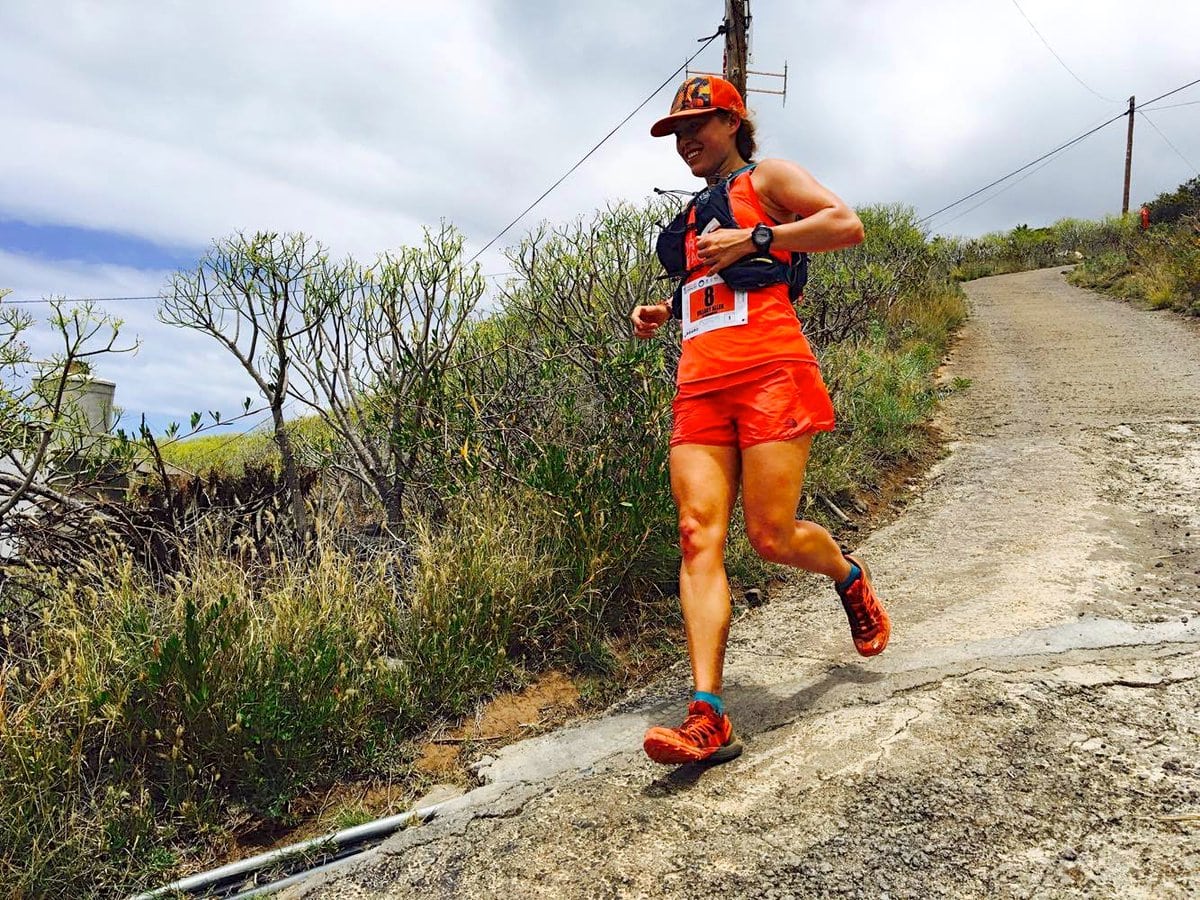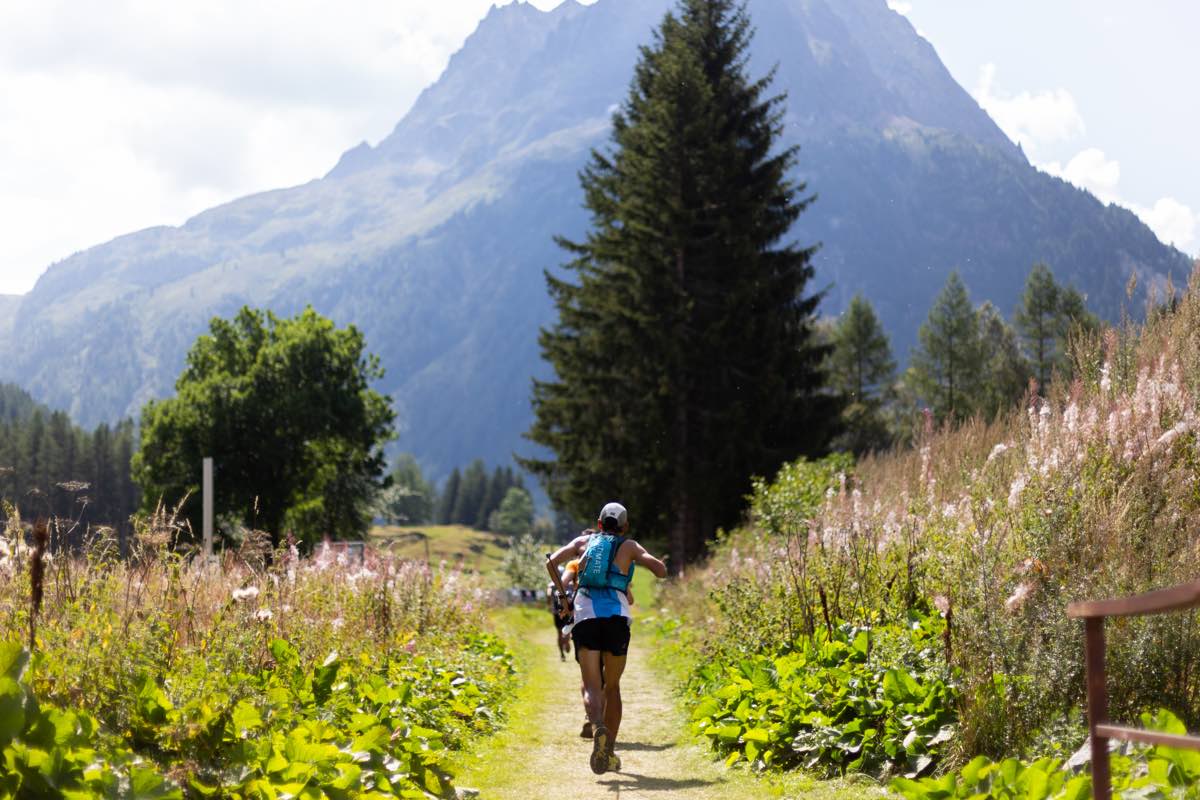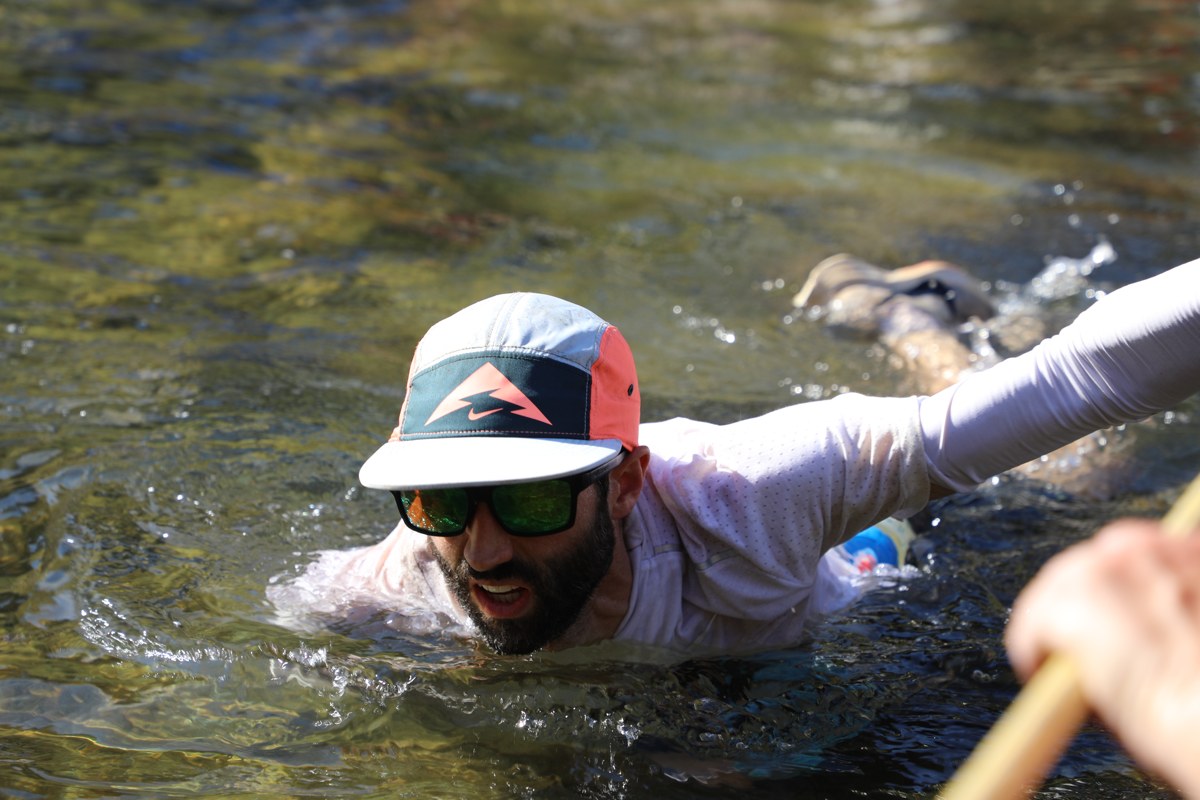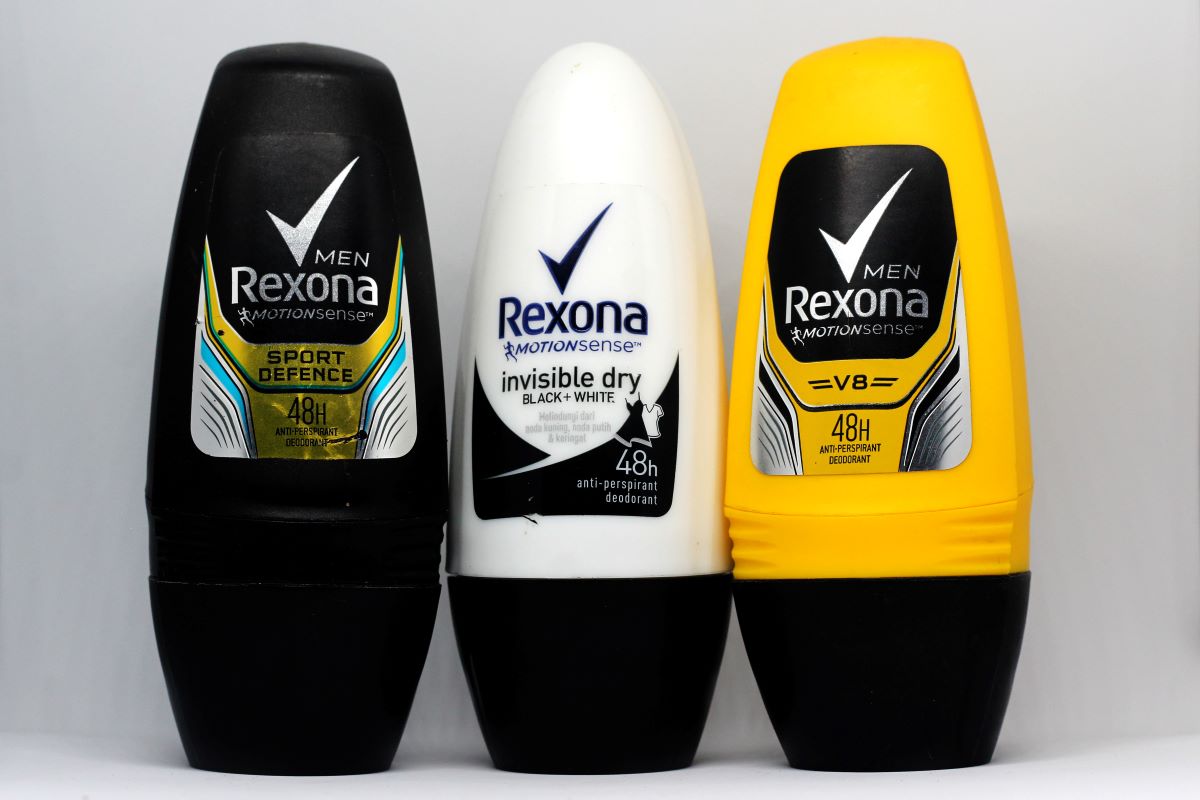Welcome to another edition of Running on Science’s Fact or Fiction, the occasional myth-busting version of our column.
This round, we take a look at three more intriguing topics that you may have heard on the trail. Will deodorant impair your sweating? Will one good downhill session bulletproof your quadriceps? While slushies for dessert are delicious, are ice slurries bad in competition? As always, we will utilize current scientific literature, and some critical thinking, to help us understand if these factoids are fact, fiction, or something in between.
Fact or Fiction: “Don’t wear deodorant; you’ll overheat.”
Please tell me you watched the 2022 World Athletics Championships, which took place in Eugene, Oregon? Side note, they were amazing! As temperatures crept up during the week, a broadcast commentator said that athletes needed to avoid wearing products like lotion and deodorant while competing in the heat as both could alter their ability to sweat. Remember, we utilize sweat for evaporative cooling to help thermoregulate, and this becomes more and more important in hot weather (1). Disrupting this seems like trouble. But is deodorant such a disruptor?
First things first, what is deodorant and how does it work? Deodorant is technically a beauty product designed for destroying and masking odors. It works by killing the bacteria that cause odor and helps mask the smell of sweat with perfume. Critically, it doesn’t block your sweat glands.
Antiperspirant, a skincare product, on the other hand, works by eliminating the sweat that causes the odor. It does so by utilizing aluminum that, when exposed to sweat, creates a gel-like substance that plugs the sweat glands in your axillary or armpit region for 24 to 48 hours, depending on the product. Both deodorant and antiperspirant stop odor, something many of us are fond of, but is blocking the sweat ducts in your armpits with antiperspirant enough to affect thermoregulation?
It turns out that axillary sweating makes up less than 1% of your whole body’s sweat rate. While the use of antiperspirant might stop you from being the sweaty armpit person — I’m guilty here — it’s not a large enough region to affect your body’s ability to thermoregulate, even while exercising in hot environments (1, 2).
Conclusion
Fiction! First things first, deodorant doesn’t work the same way as an antiperspirant. But many deodorants are combined with an antiperspirant, so yours might contain the sweat gland-plugging ingredient, too. But our armpits are not that big of a region, and you have sweat glands all over your body that do the work of thermoregulating for you.
Despite the evidence, if this is something you are worried about for your upcoming hot weather race, use a natural deodorant that doesn’t contain aluminum.
Fact or Fiction: “You only need one good downhill session before your next trail race.”
Who isn’t worried about blowing up your quadriceps during your big race? It’s on my list of worst-case scenarios and has led to me telling my crew, “I don’t care if I get passed by 100 people as long as my quads keep working!” Many of the ways we prepare for racing a long race are by doing things over and over again.
We practice our nutrition, we run hills, we log miles and hours — and that repetition is overwhelmingly safe. When it comes to running downhill, and the specific neuromuscular and musculoskeletal demands it presents, attacking it repeatedly might put you on the injured list instead of the starting line.
How do we counter this? Enter the old adage: To “season” the quads, you only need one good downhill session. Is that true, and how does it work?

Hillary Allen on the bottom part of the Transvulcania Ultramarathon’s quadriceps-busting 8,000-foot descent in 2017. Photo: iRunFar/Meghan Hicks
The demands placed on your body for downhill running differ greatly from running on flat or uphill surfaces. This is largely due to downhill running requiring eccentric muscle activation, which means that the muscle lengthens as it is activating, and the gift that is gravity. Thankfully, the scientific community knows a lot about eccentric contractions and how they impact muscle physiology and we can apply that directly to trail running and ultrarunning.
Enter, the repeated bout effect (RBE). RBE is a phenomenon in which skeletal muscles adapt protectively against future muscle damage after the introduction of a novel eccentric exercise (3). Essentially, one initial bout of eccentric work causes long-term protection, due to rapid neural adaptions and structural remodeling (4). Or, one bout of delayed onset muscle soreness (DOMS) goes a long way!
While this has been studied in the strength and conditioning world for several decades, it has also been put into practice in the running world. Researchers in the Human Performance Lab at the University of Calgary, in Alberta, Canada, brought recreational runners into the lab to run for 30 minutes at a slope of -20% — a fairly steep downhill — at 2.8 meters/second or roughly 9:34 minute/mile (4).
They repeated the test three weeks later. They measured neuromuscular fatigue, flat ground running biomechanics, and running economy at 24, 48, 72, 96, and 168 hours post-downhill session. What they found was that muscle soreness, neural fatigue, and maximal voluntary force production were improved after the second session compared to the first run (4). RBE was at work. The runners’ skeletal muscles adapted protectively with an extremely small dose of downhill running.

China’s Can-Hua Luo heads out of Vallorcine, France, and toward the final climb and descent of the 2019 UTMB. By this point in the race, many runners will be feeling the effects of the race’s many long descents on their quads. Photo: iRunFar/Kirsten Kortebein
A caveat, as with any study, the scope is limited to what they tested and how they tested it. When it comes to downhill running, the goal of utilizing RBE is to try to limit neuromuscular fatigue on race day, which makes your quads feel like Jell-O. RBE does not, however, increase skill on say, technical downhills.
Additionally, they tested three weeks after the first downhill bout so we don’t know exactly how long the effect lasts beyond that. What that means in practice is that putting the downhill RBE to work is probably a good idea for the runnable downhills of the Western States 100, but this shouldn’t be your only form of downhill practice ahead of the technical downhills of The Rut 50k.
Conclusion
Fact! Thanks to the repeated bout effect, you can in fact “season” those quadriceps without throwing yourself downhill day in and day out. These adaptations take place pretty quickly, with little to no maintenance, and last for, at a minimum, several weeks.
Fact or Fiction: “Avoid ice slushies on the run!”
When I asked for beta on crewing and pacing Badwater 135 Mile, I was told explicitly to find myself a slushy at the gas station and general store when we made it to Panamint Springs Resort. I had just finished a 14-mile stretch of running where the valley air temperature was creeping toward 130 degrees Fahrenheit (54 degrees Celsius) and we were recording surface temperatures of 147 Fahrenheit (63 Celsius). I was melting.
But I located the sweet nectar of the gods in the form of a strawberry-flavored slushy. As I slurped, I thought, I would kill for one of these during a race! But hadn’t I written the article Stay Cool: Cooling Techniques in Endurance Running advising readers to avoid this very thing for mid-race cooling?
When it comes to cooling strategies, ice slushies or slurries can be very effective in reducing body temperature. This is because it takes more energy to turn to turn ice into liquid than it does to warm up cold water. How this works in practice is that internally the ingestion of an ice slurry introduces an additional avenue for heat to be transferred (5).
We know the ingestion of an ice slurry pre-exercise has been shown to reduce core body temperature by 0.5 degree Celsius (about 1 degree Fahrenheit) (6). The benefit to this, particularly in shorter races, is that you start the hot effort with another degree of internal heat capacity, or more wiggle room before you potentially overheat. Similar benefits, post-exercise, ice slurry consumption seems to produce the slightly lower core body temperature as compared to cold water immersion (7).

Tyler Green cooling off in the American River at mile 78, on his way to taking second at the 2021 Western States 100. Photo: iRunFar/Bryon Powell
All of this goodness said, the reason we’ve suggested avoiding ice slurries during your hot race is because the drink is generally so cold that it can activate thermoreceptors, which detect temperature change, in your abdomen. When those receptors are activated, your body can be tricked into thinking you are cooler than you are and lead to a reduction in sweating. Remember that sweating is one of our best ways to offload heat into the environment, and a reduction in that could be problematic.
What happens when you are in an environment where you can’t fully benefit from evaporation, such as a hot, humid environment and/or a place with poor air circulation? This is what you’ve been waiting to hear if you live in humid climates! That’s right, if you are training or competing in an area where sweat efficiency is poor and your sweat is dripping or pooling instead of evaporating, the ingestion of ice slushies could in fact be for you (6).
Conclusion
It’s a draw! Like many things in life, time and place are important. Pre- and post-hot race, it’s safe to reach for that ice slushy, as you’ll benefit from a decrease in core body temperature. When it comes to mid-race indulgence, think about sweat efficiency. If it’s dry and your sweat’s evaporation rate is high, then focus on staying wet (ice goes on the outside). And if it’s hot and humid, or there’s no wind and you’re creating a puddle of sweat, then give a slushy a try (ice goes on the inside).
Call for Comments
- Have you tried running a hot race with and without antiperspirant? Notice any significant differences?
- Do you factor in hard downhill efforts as part of your ultra training?
- Have you tried ice slushies during a race and how did it go?
References
- Burry JS, Evans RL, Rawlings AV, Shiu J. Effect of antiperspirants on whole body sweat rate and thermoregulation. Int J Cosmet Sci. 2003 Aug;25(4):189-92. doi: 10.1046/j.1467-2494.2003.00184.x. PMID: 18494900.
- Everts, S. (2022).The joy of sweat: The strange science of perspiration. W. W. Norton & Company, Inc.
- Hyldahl RD, Chen TC, Nosaka K. Mechanisms and Mediators of the Skeletal Muscle Repeated Bout Effect. Exerc Sport Sci Rev. 2017 Jan;45(1):24-33. doi: 10.1249/JES.0000000000000095. PMID: 27782911.
- Khassetarash, A., Vernillo, G., Krüger, R. L., Edwards, W. B., & Millet, G. Y. (2022). Neuromuscular, biomechanical, and energetic adjustments following repeated bouts of downhill running.Journal of Sport and Health Science, 11(3), 319–329. https://doi.org/10.1016/j.jshs.2021.06.001
- Osakabe, J., Matsumoto, T., & Umemura, Y. (2019). Ice slurry ingestion as a cooling strategy in the heat. The Journal of Physical Fitness and Sports Medicine,8(2), 73-78. doi:10.7600/jpfsm.8.73
- Mejuto, G., Chalmers, S., Gilbert, S., & Bentley, D. (2018). The effect of ice slurry ingestion on body temperature and cycling performance in competitive athletes. Journal of Thermal Biology,72, 143-147. doi:10.1016/j.jtherbio.2018.01.012
- Stanley, J., M. Leveritt, and J.M. Peake (2010). Thermoregulatory responses to ice-slush beverage ingestion and exercise in the heat. J. Appl. Physiol.110:1163–1173.

